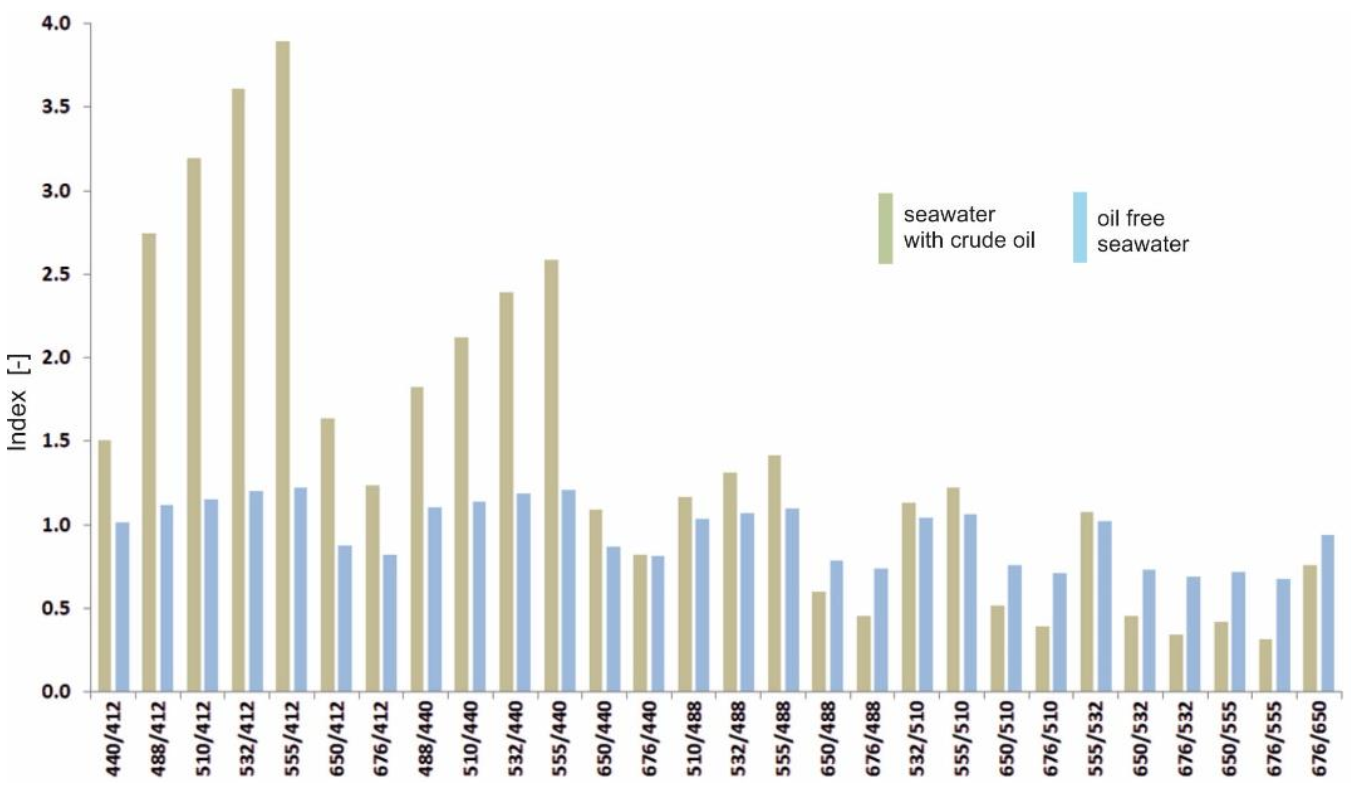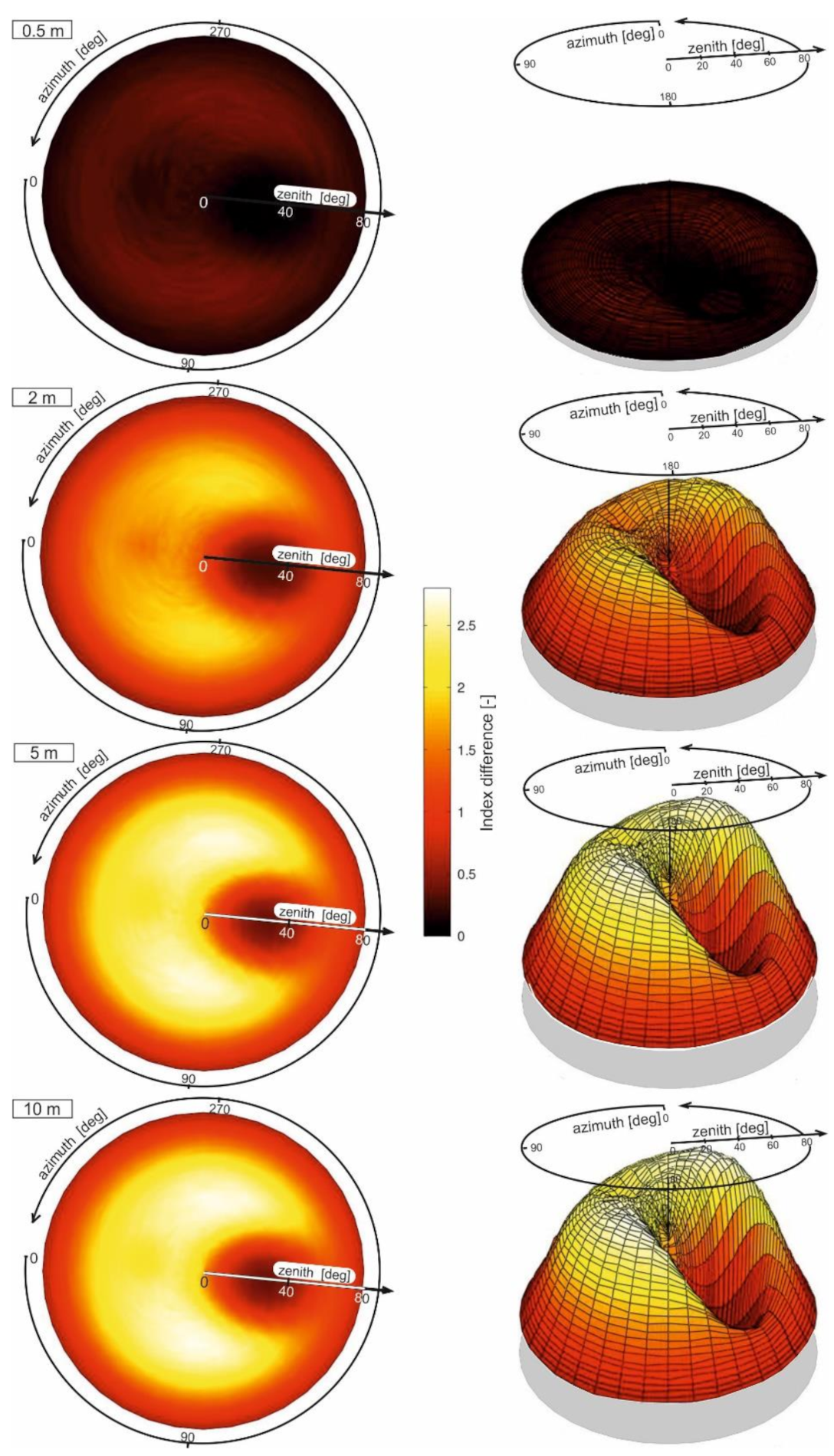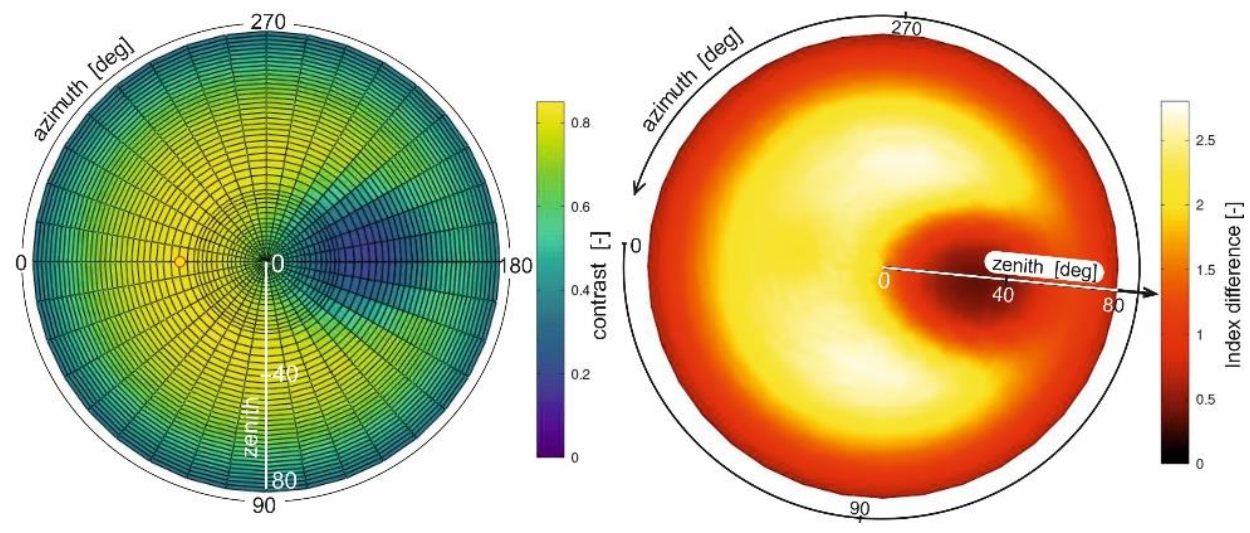Modelling the Spectral Index to Detect a Baltic-Type Crude Oil Emulsion Dispersed in the Southern Baltic Sea
Abstract
:1. Introduction
2. Materials and Methods
3. Results and Discussion
Author Contributions
Funding
Institutional Review Board Statement
Informed Consent Statement
Conflicts of Interest
References
- Singh, G.; Kumar, M. Performance analysis of electromagnetic (EM) wave in sea water medium. Wirel. Netw. 2020, 26, 2125–2135. [Google Scholar] [CrossRef]
- Baszanowska, E.; Otremba, Z.; Piskozub, J. Modelling the Visibility of Baltic-Type Crude Oil Emulsion Dispersed in the Southern Baltic Sea. Remote Sens. 2021, 13, 1917. [Google Scholar] [CrossRef]
- Cox, C.; Munk, W.H. Statistics of the sea surface derived from sun glitter. J. Mar. Res. 1954, 13, 198–227. [Google Scholar]
- Lai, Q.; Xie, Y.; Wang, C.; Wang, M.; Tan, J. Multiband directional reflectance properties of oil-in-water emulsion: Application for identification of oil spill types. Appl. Opt. 2021, 60, 6902–6909. Available online: https://www.osapublishing.org/ao/abstract.cfm?URI=ao-60-23-6902 (accessed on 30 September 2021). [CrossRef]
- Merlin, F.; Zhu, Z.; Yang, M.; Chen, B.; Lee, K.; Boufadel, M.; Isaacman, L.; Zhang, B. Dispersants as marine oil spill treating agents: A review on mesoscale tests and field trials. Environ. Syst. Res. 2021, 10, 37. [Google Scholar] [CrossRef]
- Baszanowska, E.; Otremba, Z.; Piskozub, J. Modelling Remote Sensing Reflectance to Detect Dispersed Oil at Sea. Sensors 2020, 20, 863. [Google Scholar] [CrossRef] [PubMed] [Green Version]
- Baszanowska, E.; Otremba, Z.; Piskozub, J. Modelling a Spectral Index to Detect Dispersed Oil in a Seawater Column Depending on the Viewing Angle: Gulf of Gdańsk Case Study. Sensors 2020, 20, 5352. [Google Scholar] [CrossRef] [PubMed]



Publisher’s Note: MDPI stays neutral with regard to jurisdictional claims in published maps and institutional affiliations. |
© 2021 by the authors. Licensee MDPI, Basel, Switzerland. This article is an open access article distributed under the terms and conditions of the Creative Commons Attribution (CC BY) license (https://creativecommons.org/licenses/by/4.0/).
Share and Cite
Otremba, Z.; Piskozub, J. Modelling the Spectral Index to Detect a Baltic-Type Crude Oil Emulsion Dispersed in the Southern Baltic Sea. Remote Sens. 2021, 13, 3927. https://doi.org/10.3390/rs13193927
Otremba Z, Piskozub J. Modelling the Spectral Index to Detect a Baltic-Type Crude Oil Emulsion Dispersed in the Southern Baltic Sea. Remote Sensing. 2021; 13(19):3927. https://doi.org/10.3390/rs13193927
Chicago/Turabian StyleOtremba, Zbigniew, and Jacek Piskozub. 2021. "Modelling the Spectral Index to Detect a Baltic-Type Crude Oil Emulsion Dispersed in the Southern Baltic Sea" Remote Sensing 13, no. 19: 3927. https://doi.org/10.3390/rs13193927
APA StyleOtremba, Z., & Piskozub, J. (2021). Modelling the Spectral Index to Detect a Baltic-Type Crude Oil Emulsion Dispersed in the Southern Baltic Sea. Remote Sensing, 13(19), 3927. https://doi.org/10.3390/rs13193927






